Some of the links on this page contain affiliate links. Renaissance Path is a participant in the Amazon Associates Program, an affiliate advertising program that provides a way for websites to earn advertising fees by linking to products. We only link to products we normally use and trust. When you purchase an item through the link we receive a small commission at no additional cost to you. This helps pay for the costs associated with running this blog. Your support is greatly appreciated. Thank You!
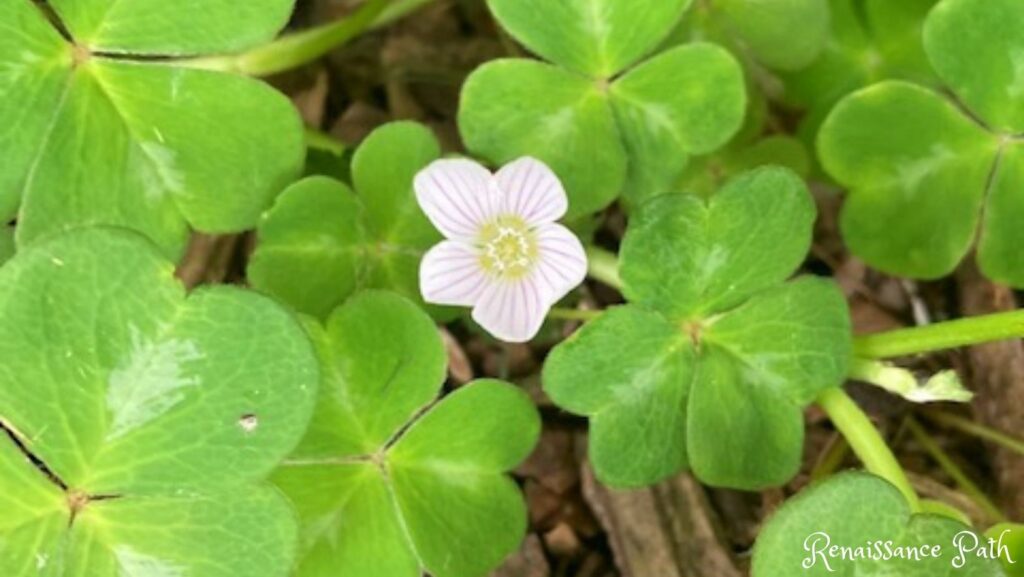
Wood Sorrel is a plant. Often this plant is thought of as a weed. It is edible and also has some medicinal value. This beauty pictured above is growing right in my front flower beds underneath an ornamental cherry tree. There are several different varieties of wood sorrel. This particular sorrel is called Mountain Wood Sorrel (Oxalis Montana). Mountain Wood Sorrel produces white flowers with pink strips.
Wood Sorel has a lemon flavor. It reminds me of Sweet-Tart candies a bit. I had my kids try it and they agreed. The whole part of the plant is edible from the flower, leaves, stem, roots, and seed pods. They taste great in stews, salads, soups, drinks, or just eaten as a trail snack.
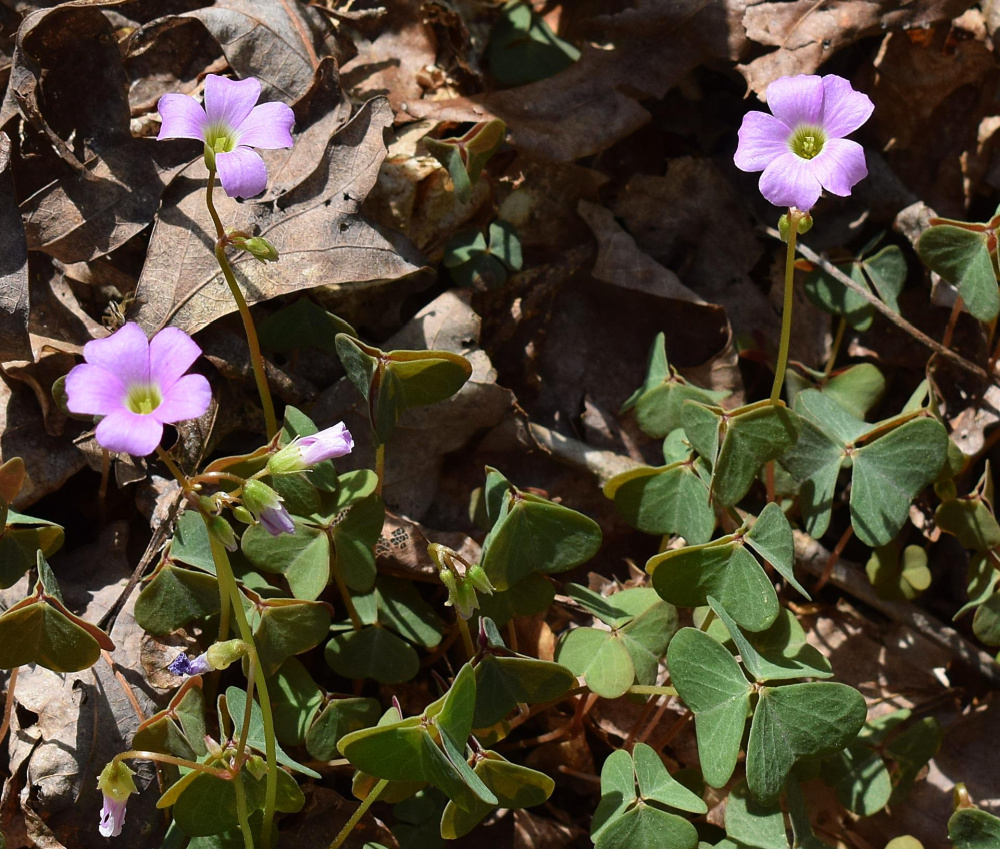
Other Names it’s Known By
False Shamrock
Sour grass
Bermuda Buttercup
White Wood Sorrel
Mountain Wood Sorrel
Pink Wood Sorrel
Yellow Wood Sorrel
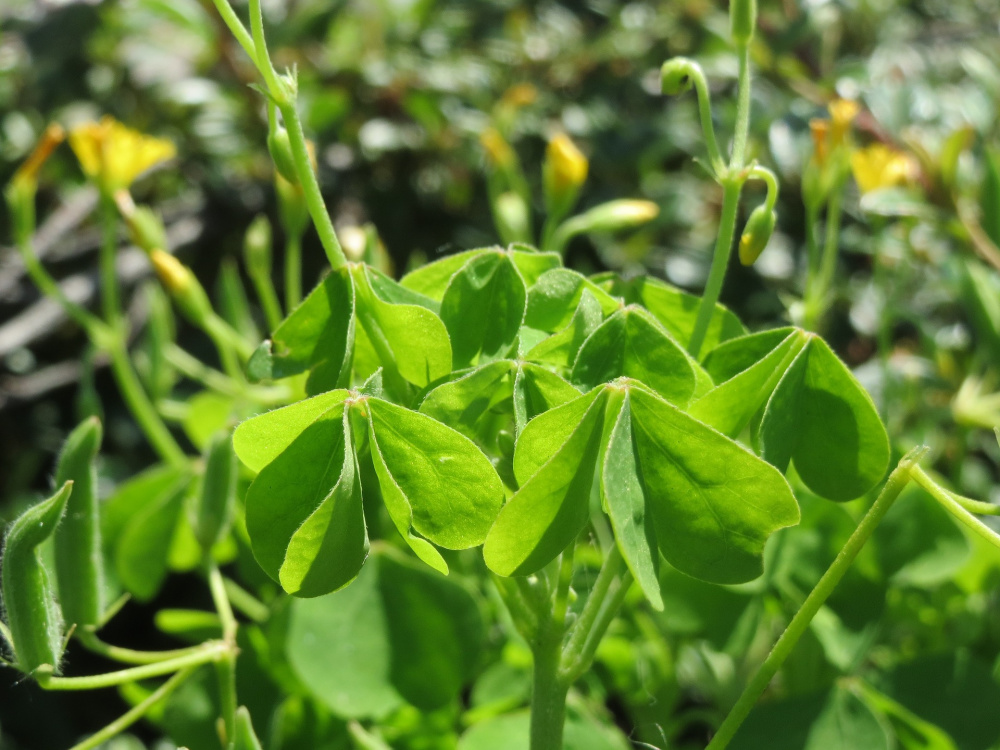
Identification
Wood Sorrel is around 15” in height has one flower per stalk and has clover-like leaves. Its three heart-shaped leaves measure around 3/4 -1” across and have a midvein like a paper heart folded in half. The leaves are green but can sometimes turn a purplish-burgundy color. The leaves close at night folding in half. And open during the day.
There are many different varieties of Wood Sorrel. The flowers can be white, pink, purple and the most commonly found one is yellow wood sorrel. The flowers have five petals. When the flower is done blooming it forms a seed pod that stands erect.
Wood Sorrel blooms from Spring to Fall but can bloom year-round in warmer climates.
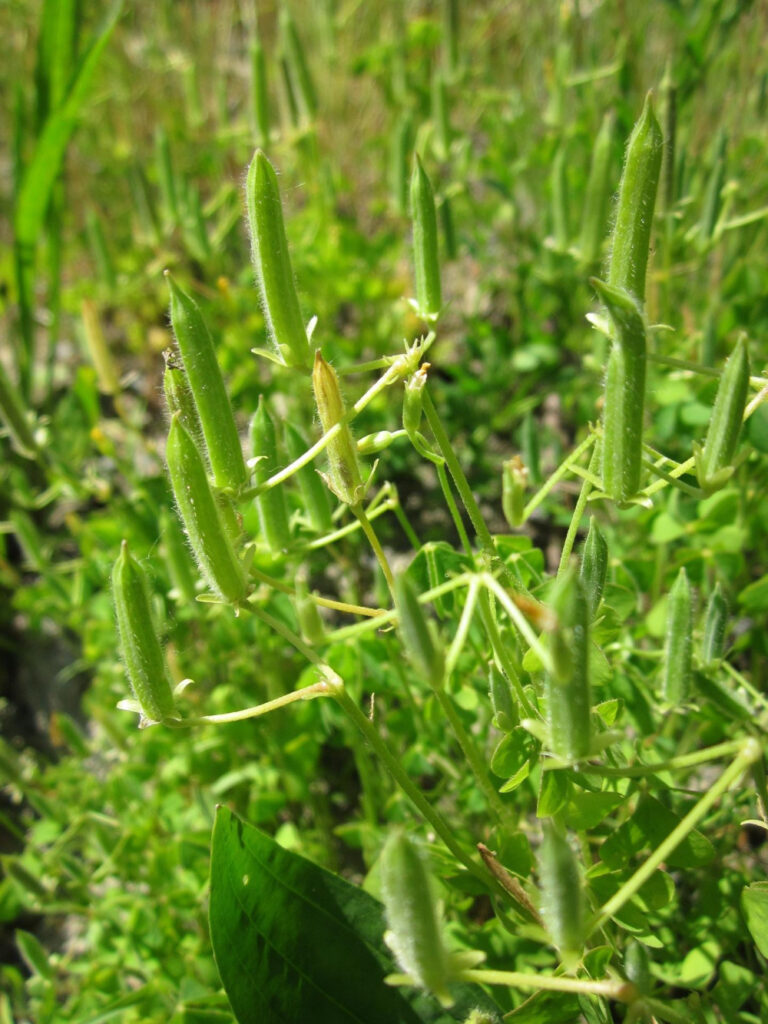
History
Native Americans used sorrel on long trips when they were thirsty because it has a tart lemony flavor it makes you salivate. Colonists used it to treat scurvy. It’s been used for upset stomach, mouth sores, and nausea.
Nutrition of Wood Sorrel
Wood Sorrel is a rich source of vitamin C. It also contains vitamin A, magnesium, manganese, copper, iron and potassium and has a good amount of fiber.
Wood Sorrel Recipes
There are many ways to use and enjoy Wood Sorrel. You can use it as a replacement for lemon pepper. You can place it inside poached or baked fish, it gives it a nice lemony flavor. You can use it to infuse water or hot tea by adding a few tablespoons of chopped wood sorrel in a mug with hot water and steeping for 5-10 minutes.
Wild Wood Sorrel lemonade from The Northwest Forager
Wood Sorrel Sorbet From MM Bon Appetit
Wood Sorrel Waldorf Salad from Foragers Frolly
Mushrooms and Sorrel from The Forager Chef
Uses in Folk Medicine
It can be used for dry mouth or swollen salivary glands. When you have swollen salivary glands it helps to suck on things that are sour to help keep those glands excreting saliva.
It has been used for sore throats, mouth sores, fevers, scurvy, UTI’s and upset stomach

Warnings
Oxalis(Wood Sorrel) has oxalic acid in it and people who tend to get rheumatism, gout, and kidney stones are told to be careful when consuming foods with large amounts of oxalic acid.
Oxalic acid can impact your body’s ability to absorb calcium because oxalic acid binds to it. It’s also been said that foods high in oxalic acid can lead to leaching calcium from your bones. But honestly, for this to happen you would have to eat tons of it.
But one must remember we eat a lot of foods that have oxalic acid in them. Things like chocolate, spinach, beets, beans, and black pepper.
If all the foods you consume are high in oxalates then it’s probably time to back off a bit. I have been told by several doctors you have to eat quite a bit of high oxalate foods for it to be a problem.
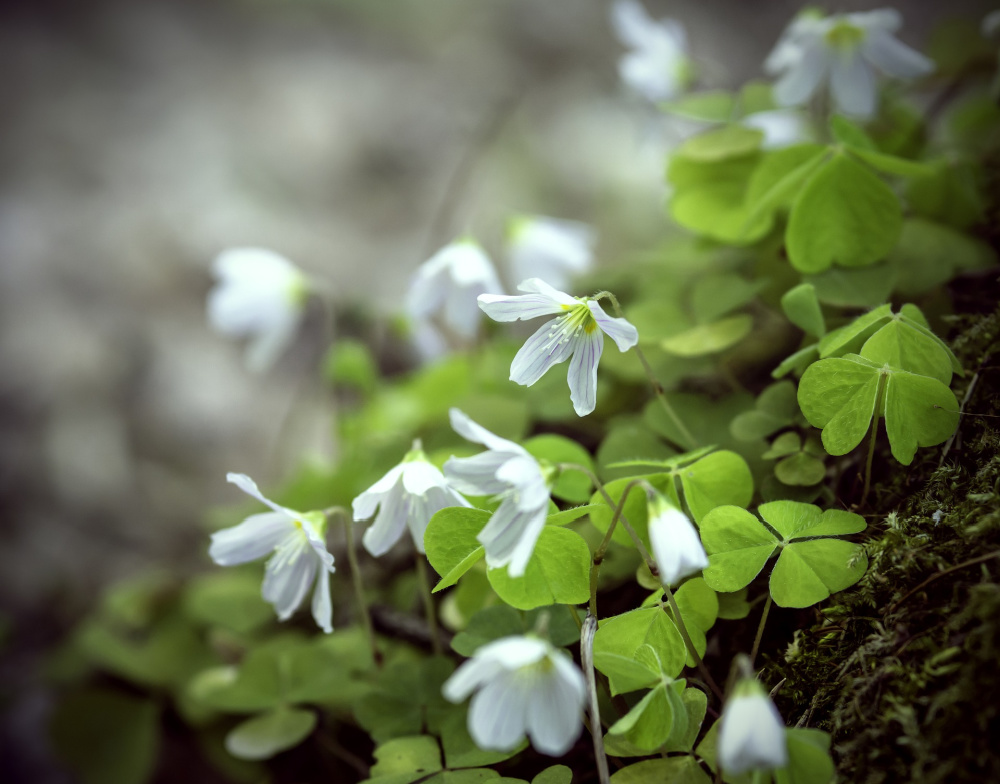
Final thoughts and Recommendations
If you are just getting started on foraging for wild edibles I highly recommend you go foraging with an experienced person who is familiar with the region you live in. And of course, never eat anything that you’re not sure about.
When foraging always stay away from polluted areas or roadsides.
If you like learning about herbal medicinal or wild edibles please check out my post on Cleavers.
Much Love,
Melissa
This website is for educational purposes only. The information provided by Renaissance Path is not intended to diagnose, treat, or cure any diseases. Please consult a qualified health care professional for medical advice.
[…] If you enjoy learning about wild edibles and herbal medicine check out this post on Wood Sorrel. […]